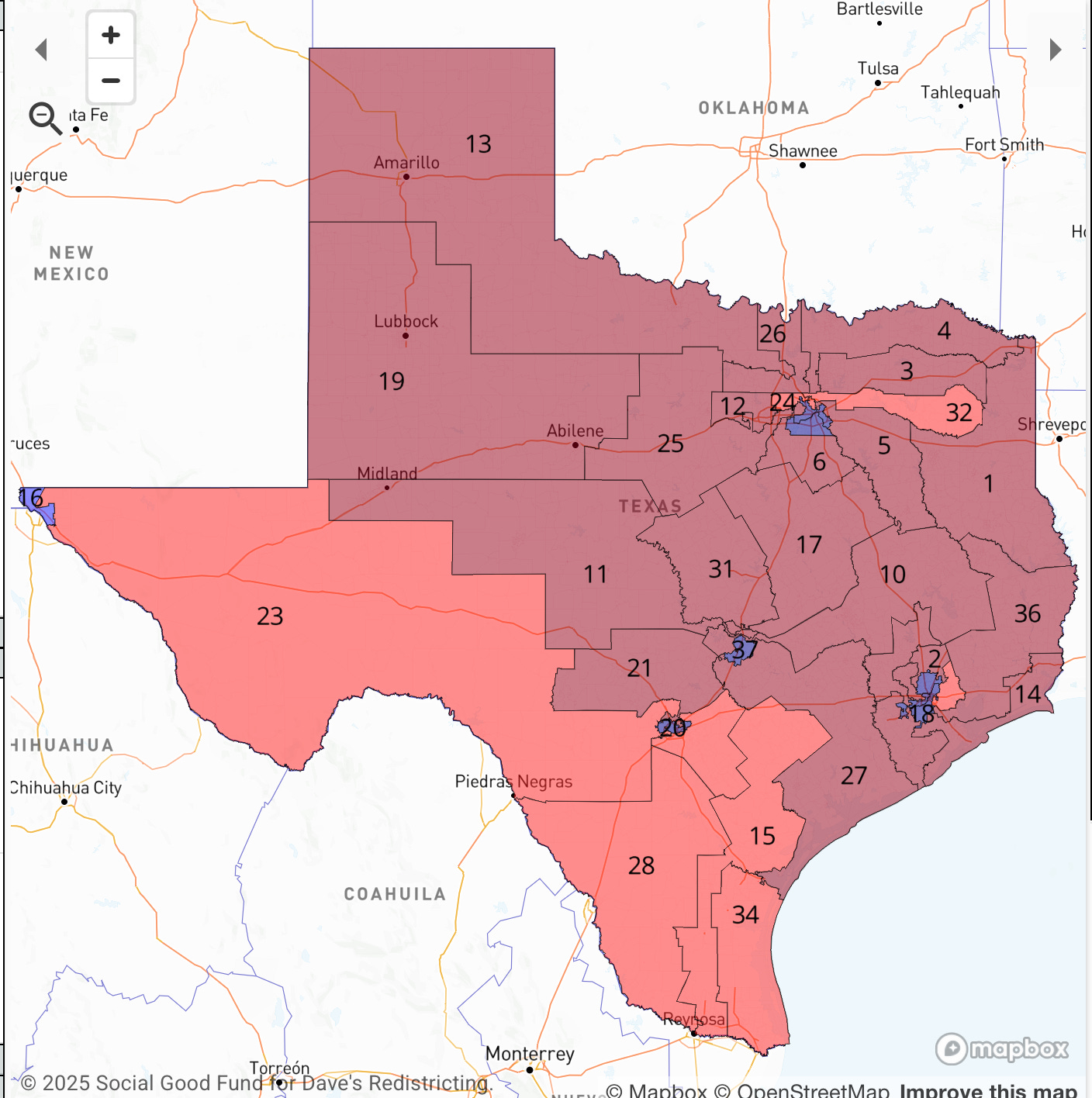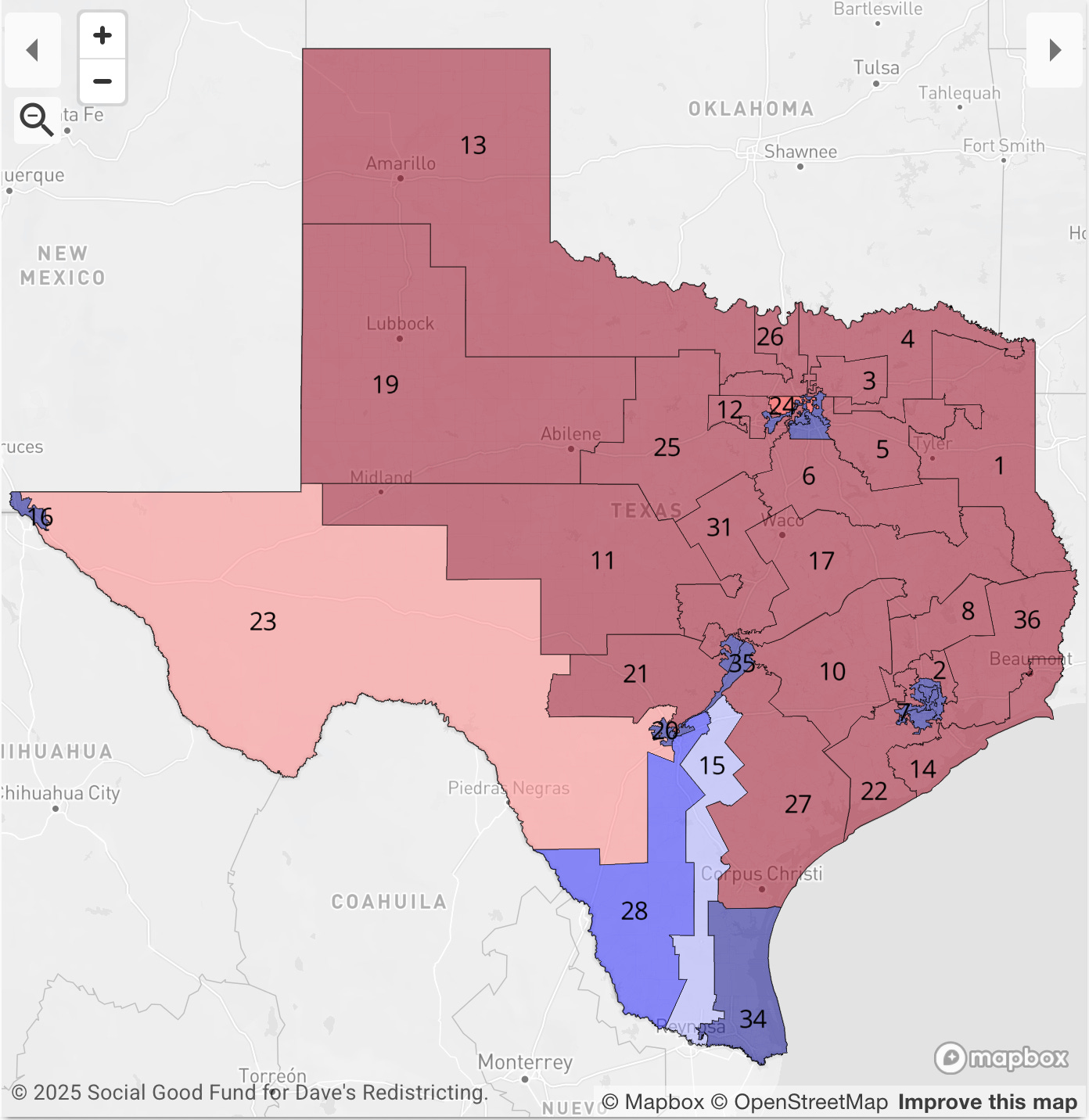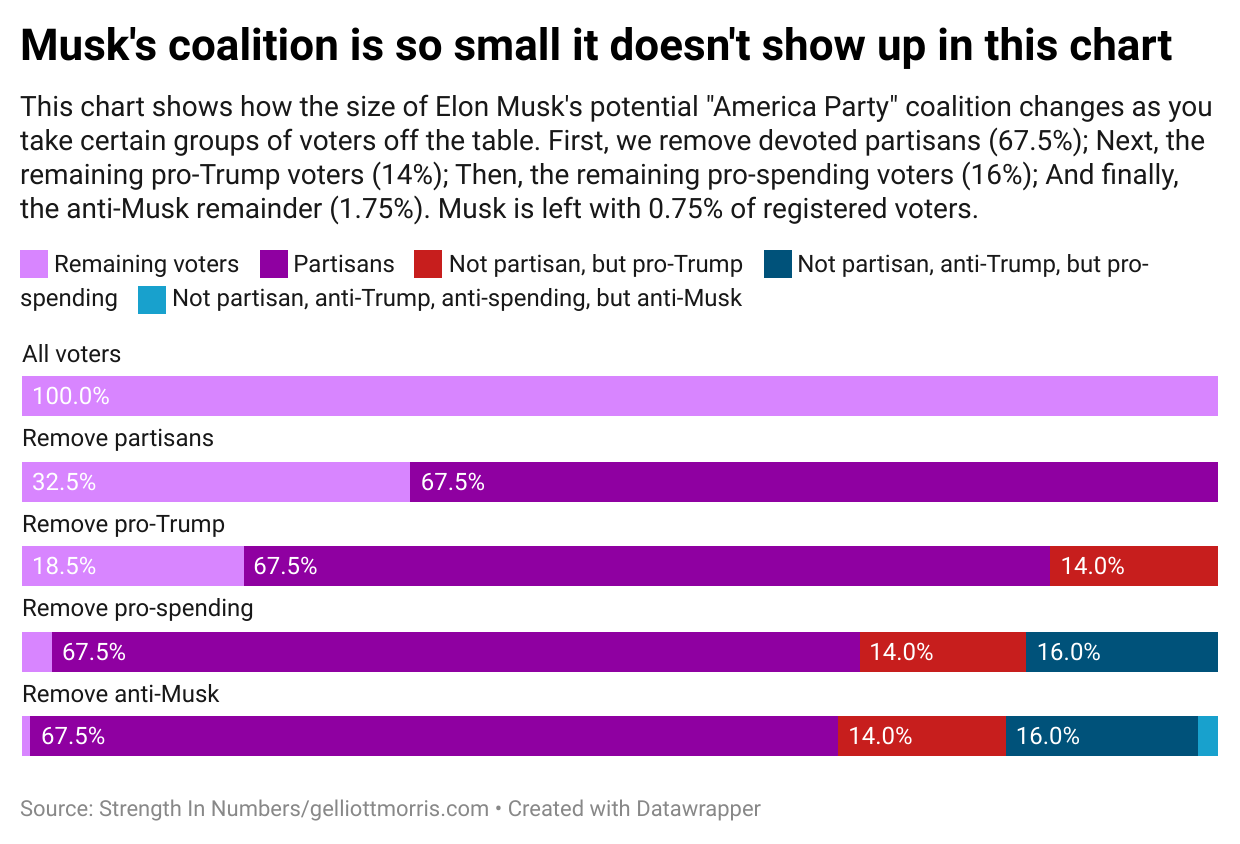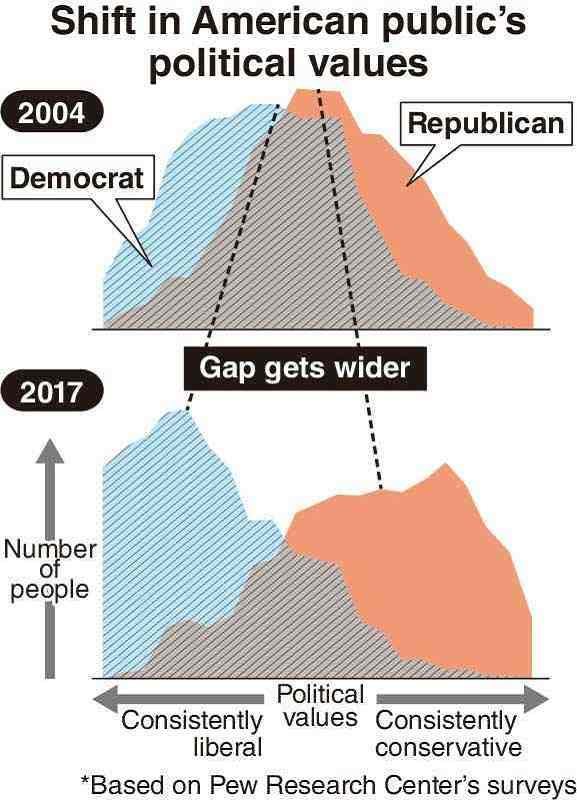Texas Republicans are trying to cheat Democrats out of midterms victory
That, and other topics from the July 2025 Strength In Numbers reader Q&A
Greetings from Washington, where it's disgustingly muggy out so I'm thrilled to sit inside for a few hours and go through reader questions. I really enjoy these Q&A posts because they're fun and I get to interact with readers directly, so thanks to everyone who sent in a question! Pour yourself a nice iced tea (or something stronger) and dive in with me.
One programming note: The August Q&A will go out on or around the 28th. You can send questions for next month to me via email (questions@gelliottmorris.com), or leave them in the comments of this post.
As usual, the Q&A will be paywalled halfway through as a bonus for paying members of Strength In Numbers. You can sign up here:
This month, y'all asked about:
Could Republicans redistrict their way to a majority in the 2026 midterms?
Will the delay in the OBBBA's Medicaid cuts affect electoral accountability?
What type of voters are likelier to support third parties?
Do we need to adjust issue polls for partisan bias/house effects?
Are people reading too much into Zohran Mamdani?
among other subjects. And awayyyy we go:
Midterms q1: Texas GOP redistricting efforts
Jay asks:
Would Texas redistricting really cost Democrats the House in the midterms if the anticipated blue wave materializes? I can see where it could make a difference in a close vote, but some of the fear seems disproportionate to the threat. If Dems gain 20 seats without redistricting (a scenario that seems reasonable), they'll gain roughly 15 or so with redistricting. They still take the House. Curious to know your thoughts. Thanks again!
The short answer is yes, redistricting in Texas could absolutely cost Democrats the House next year. But of course this depends on two things: (1) how many seats the Republicans manage to steal via their mid-cycle redistricting, and (2) the popular vote next year.
Currently, it looks like the TX GOP is trying to cut the number of Democrats elected from the state by 5. Their proposed map goes hog-wild with the usual "cracking and packing" methodology to flip several seats in and around Dallas, Houston, and the San Antonio-Austin I-35 corridor. You can view the partisan makeup of the new maps here (this map was created by Brad Johnson, managing editor of The Texan, a new digital outlet in the state). The colors represent the partisan lean of the seat.
Compare that to the partisan lean (calculated by Dave’s Redistricting App) of the current district boundaries:
Democrats won 13 of the state's 38 congressional districts in 2024. Under this new map, they would win just 8 seats. It's worth noting that the current map is already a pretty far cry from fair, given Democrats would have won 16 seats if they were decided in proportion to the parties' statewide shares of the vote.
It's like the TX GOP's new House map was made in a lab to provide maximum Republican advantage.1
Texans are understandably pissed about the new map… and, really, how couldn't you be? The whole process lays bare the fundamental flaw with letting politicians draw their own districts. The current partisan re-redistricting effort is just the logical end of a system with no partisan guardrails where, instead of voters picking their politicians, politicians pick their voters.
I'm not a partisan Democrat, but I am partisan when it comes to electoral reform. What Texas is doing is, to me, a sick assault on republican democracy in America. Worried about losing the next election? Just redraw the map and add a few more seats for your team! How is this not just cheating?
At the same time, this is the reality of our current redistricting laws, so it’s not an option for Democrats to simply resign themselves to complaining about the system. It’s hard to be represented fairly when you’re increasingly the party of cities.
OK, but back to the midterms. Democrats won 215 U.S. House seats in 2024, with a popular vote margin of -2.5 percentage points. Currently, Democrats lead by anywhere between 2 and 3 percentage points in the generic ballot (my average is coming out on Friday!). That's a 5-point swing from 2024. If you apply that swing, Democrats would win 230 House seats, all else equal. The TX GOP's new map in TX means Dems would only win 225.
Now you can start to bring the swing down toward a lower end and see how the midterm results change. If Democrats only tie in the popular vote — a 2.5-point swing — under current lines, the party should win 222 seats. Under the new lines, they'd win just 217 seats and lose the majority.
So, Jay, to answer your question directly: a big blue wave in 2026 would be large enough to overcome the hyper-partisan effect of the TX GOP's hyper-partisan redistricting efforts. But in a smaller wave (a ripple?), the seat changes could flip control of the U.S. House. But even in the case of a big blue midterm, once 2028 rolls around, those 5 seats could prove decisive again.
In general, politician-controlled redistricting is just another point of failure in our Constitution, another area where the founders failed to see how partisanship could twist our politics and warp our democracy. It's sad.
Midterms q2: Effect of Medicaid cuts
Paul asks:
In calculating/estimating/predicting the impact of Medicaid changes on public opinion, how much do the effective dates of the changes matter? Some aren’t scheduled to kick in until after the midterms, right? Of course, public messaging will have an impact. So, too, will propaganda/disinformation. Just wonder how much and when the effects of the changes will be felt in the actual lived lives of current or would-be recipients. Any way to factor that into your excellent work?
For context to readers, here's a timeline of the cuts to social services Republicans made in the OBBBA. The direct cuts to Medicaid funding will happen on Jan 1., 2026, and the portion of the law that will increase the amount that states have to pay for SNAP has an effective date of October 2026. The various changes that will force people off Medicaid (work requirements and extra paperwork) are delayed to 2026. I believe the SNAP cuts for energy bills and the SNAP paperwork requirements are already in effect.
On this question, it helps to start with Occam's Razor. Remember that the whole public purpose of these cuts was to help balance the federal budget (something it abjectly fails to do). House Republicans wouldn't delay the cuts if they thought they were going to get away without suffering electoral consequences.
I think they will still suffer from the political hit. Remember, the OBBBA is perhaps the most unpopular federal law ever. And there is precedent for long-term consequences of cutting benefits: Former Governor of Kentucky Matt Bevin cut taxes and social services so severely in 2018 that state Republicans later overrode his veto to undo many of his changes, and the state elected a Democratic governor in 2019.
Thinking even longer term, I don't see how kicking tens of millions of people off health care and food assistance is going to help the GOP become a "multi-racial working class coalition."
Demand for a third-party
Anonymous asks:
It'd be interesting to look at Perot voting among "strong" vs. "not-so-strong" partisans - my guess would be that "not-so-strong" partisans are much more likely to support Perot/Musk-like candidates, but that's an empirical question.
And Harrison asks a related question:
It may be too early to explore this now, but I’m curious — is there any independent indication of what fraction of voters might support the ‘America Party’? If so, would it be possible to backtest how that support might have affected the outcome of the last election?
I will point these readers to our July Strength in Numbers/Verasight poll, which asked voters if they'd support (a) a third party and (b) Musk's "America Party" in Congress next year. Musk's party took a 60% hit in likely support compared to a general third party.
Also, see this post backing into a calculation for potential Musk party vote shares in a national election:
In our SIN/Verasight polling data, support for Musk's party is actually mostly contained to far-right voters, not moderates:
"Very liberal" ideology (self-placement): 1% "very likely" to vote for “America Party” candidate
Liberal: 4%
Somewhat liberal: 8%
Moderate: 8%
Somewhat conservative: 1%
Conservative: 10%
Very conservative: 15%
If you just ask voters if they're "very likely" to support a generic third-party candidate, you do get more people in the center saying yes:
Very liberal: 25%
Liberal: 7%
Somewhat liberal: 19%
Moderate: 22%
Somewhat conservative: 30%
Conservative: 10%
Very conservative: 4%
The poll samples here are pretty small, so don't sweat differences smaller than, say, 5 points; they're well inside the margin of error.
These data speak to a disconnect between how moderate politicians talk about third parties and the electorate's demand for them. For the most part, the only successful third parties in America are on the ideological fringes, not the middle: Green, Libertarian, Constitution etc. The "moderate middle" exists, but is apparently not bipartisan enough that the voters on either side want to hang out with a bunch of their opponents in a new endeavor.
Remember, due to partisan sorting, ideology is more of a binomial distribution than a Gaussian one. Here's a visualization of Pew data on the subject:
*The rest of this post is paywalled for paying members of the Strength In Numbers community. There is a lot left in this post, so if you're learning anything or having fun so far, I'd encourage you to at least give a paid membership a shot with a free trial. A paying membership gets you access to extra posts, early data, and a private community server where we share articles, ideas, data, and of course, memes.
Partisan bias in issue polling
Keep reading with a 7-day free trial
Subscribe to Strength In Numbers to keep reading this post and get 7 days of free access to the full post archives.






